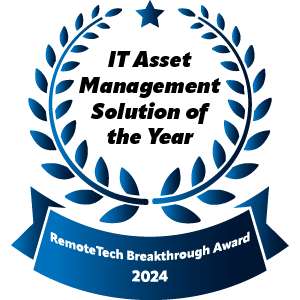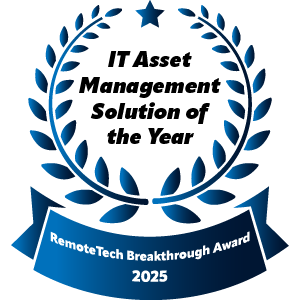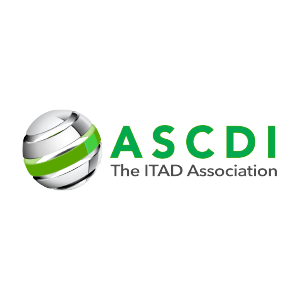How Branded Portals Help ITAD Providers Retain Clients
IT asset returns have a reputation for being clunky. Many IT asset disposition organizations end up buried in spreadsheets, back and forth phone calls, and endless email chains just to move equipment from one place to another. The result is lost visibility and extra risk at every step, with staff caught in processes that drag on far longer than they should.
Managing client returns shouldn’t drain your team’s time or bury you in manual updates. A branded portal lets your customers initiate and track returns online, directly under your brand—giving them transparency while you maintain full control.
These portals turn complicated coordination into a professional experience. Instead of wrestling with manual tracking and updates, you gain a single hub where every return is easy to track and manage.
What Are Branded Portals?
Branded portals are customer-facing online platforms. They are fully customizable with your company’s logo and URL, creating a professional interface that looks and feels like an extension of your organization.
Through the portal, your customers can initiate and track IT hardware returns for end-of-life, lease expirations, employee offboarding, repairs, value recovery, or recycling. Instead of relying on email requests or paper forms, branded portals give users a convenient way to send IT assets directly to your processing facility.
With your branding applied, the portal doubles as a professional storefront that extends your professional image and improves your customer experience.
Benefits of Branded Portals
There are plenty of reasons to consider investing in a branded portal. With the right partner, these platforms go well beyond convenience. They can reshape how your organization manages IT assets and relieve the burden on HR and IT teams.
Here’s what makes them so powerful:
Centralized Visibility and Control + Transparency for Clients
You get one dashboard that shows you every return in progress. No more digging through spreadsheets or chasing logistics vendors for updates. A branded portal gives you real-time visibility into where assets are and what happens next, whether recycling, resale, or destruction. For leaders responsible for accountability, this level of control turns asset management from a guessing game into a clear, predictable process.
When communicating with a customer, ITADs can show clients exactly where assets are and what stage of processing they’re in. Transparency builds trust and reduces service inquiries.
Streamlined Asset Returns + Automated Client Engagement
Returns don’t need to be a headache. Branded portals let end users initiate returns online with just a few clicks, freeing up your team. The portal then handles logistics and tracking automatically, cutting out the delays of back-and-forth emails and manual forms. Employees have all the information to schedule a pickup, and assets are returned to you without hassle.
Scalability Across Locations
Whether you’re processing a single laptop or coordinating thousands of returns across multiple offices, a branded portal can scale to your needs. It applies the same workflows everywhere, so you can add volume without adding headcount.
This is a game-changer for distributed teams or enterprises with complex footprints. It ensures consistency while giving you confidence that nothing slips through the cracks, no matter how big your return program grows.
No Development Required
You don’t need developers or IT resources to launch a branded portal. ReturnCenter’s platform is ready to configure: simply apply your logo, URL, and preferred workflows. You can go live quickly without coding, API setup, or software installation. That means you can deliver a polished client experience immediately while your technical team stays focused on core operations.
Use Your Own Logistics Providers
ReturnCenter doesn’t lock you into a single network. You can manage returns through your own logistics partners, internal fleet, or preferred 3PLs, and still track everything in one place. The portal gives you full flexibility to control how each pickup, shipment, and delivery is executed while maintaining end-to-end visibility for your clients.
Stronger Compliance and Security
Compliance requirements can feel overwhelming, but branded portals make them far less intimidating. You can easily upload Certificates of Destruction and settlement reports to your clients’ dashboard, creating a secure, auditable trail for every return.
This makes regulatory reporting simpler and keeps your organization prepared for any audit. By building security and compliance into the process itself, the portal gives your customer peace of mind that sensitive data is protected from start to finish.
Sustainability Alignment
Sustainability goals are rising to the top of many corporate agendas. If your organization shares that focus, branded portals can help you weave sustainability into your operations and give clients measurable reporting.
They make it easy to route devices for responsible recycling, refurbishment, or donation and provide documentation that tracks your environmental impact. You can meet reporting requirements and demonstrate your commitment to reducing e-waste.
Improved End-User Experience
Branded portals create a professional, intuitive interface that feels part of your organization. With your logo and branding applied, the portal builds trust from the first click.
More importantly, it guides users through a straightforward process, which can encourage participation and strengthen confidence in your return program over time.
Experience a Branded Portal With ReturnCenter
The benefits of branded portals are many, and with no programming required, the ReturnCenter branded portal makes it easy to implement. Your customer-facing portal can be set up quickly with your company logo and URL.
Behind the scenes, it synchronizes with internal systems and allows ITAD providers to configure logistics options, routing rules, and service levels. This creates a professional and convenient way to manage IT assets from end to end.
Because the platform reflects your branding and aligns with your business requirements, it simplifies operations while delivering a reliable experience for end users.
Reimagine How You Manage Assets Today
Managing IT asset returns doesn’t have to be messy. Branded portals bring structure to a process that’s often fragmented, giving organizations clearer visibility and a better experience for everyone involved.
Adopting a branded portal today prepares your organization for more secure and sustainable asset management tomorrow. Fortunately, it’s easy to take the next step with ReturnCenter. Request a demo and see how your brand can launch a no-code ReturnCenter portal in under a week.


